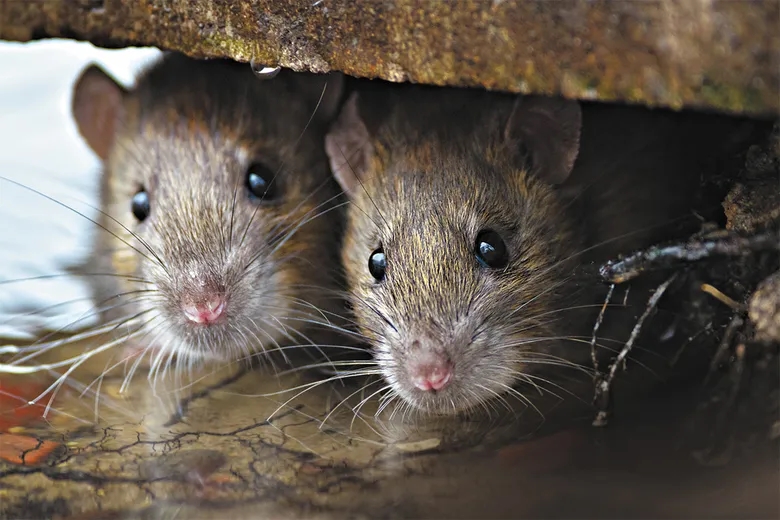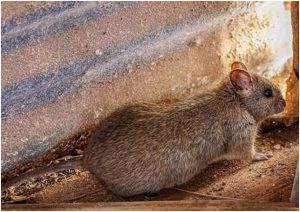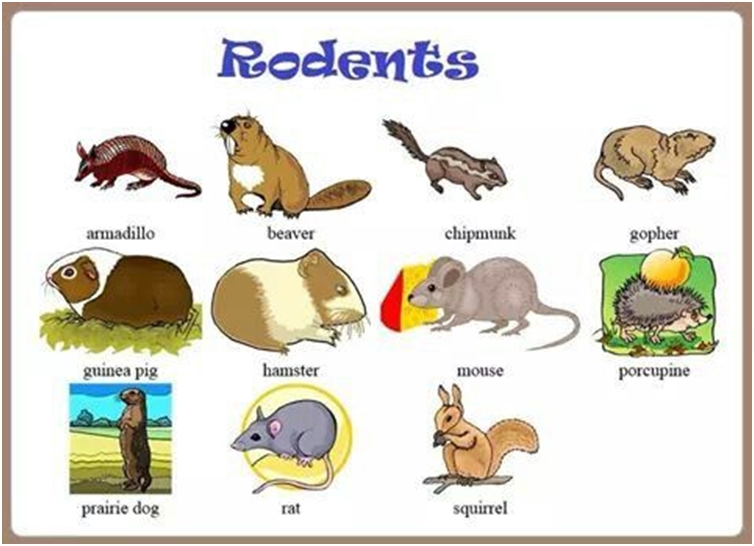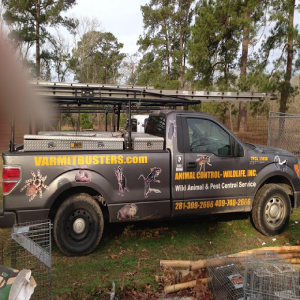5 Proven Strategies to Prevent Rodent Infestations

Expert Rodent Removal | Conroe TX
Expert Rodent Removal in Conroe, TX. If you’re facing rodent issues in Greater Conroe or Clear Lake, call us at 281.399.2666.
Rodents are mammals characterized by ever-growing front teeth, which make up approximately 40% of all mammal species. These adaptable creatures inhabit diverse environments across the globe, except for Antarctica and some islands. Common examples of rodents include mice, rats, squirrels, beavers, and guinea pigs. Rodents have adapted to various habitats, finding homes in trees, underground burrows, and bodies of water. They are capable of leaping, burrowing, and swimming. All rodents possess a pair of prominent teeth at both the top and bottom of their mouths.
Rodents possess highly developed senses of smell, hearing, and vision. Nocturnal species typically have larger eyes and can sometimes detect ultraviolet light. Many rodents have long, sensitive whiskers called vibrissae, used for tactile exploration or “whisking.” Whisker movement is mainly controlled by the brain stem and influenced by the cortex. In 1989, research by Legg et al. discovered an additional pathway involving cerebellar circuits, and in 2008, Hemelt & Keller highlighted the role of the superior colliculus in this process. (See also animal; biology; vertebrate; zoology.)
Here are five strategies to keep your property rodent-free:

Rodents are characterized by their continuously growing, razor-sharp incisors. These teeth have thick enamel on the front and thinner enamel on the back. To prevent the teeth from overgrowing and piercing the skull, rodents must constantly wear them down. As they grind against each other, the softer dentine at the rear wears away, leaving a sharp, chisel-like enamel edge.
Most rodents possess up to 22 teeth, lacking canines or anterior premolars. A gap, called a diastema, exists between the incisors and cheek teeth in most species. This allows them to pull in their cheeks or lips to protect their mouth and throat from inedible debris, which is expelled from the sides of their mouth.
- Seal Entry Points
Rodents can squeeze through openings as small as ¼ inch. Inspect your property thoroughly and seal all potential entry points, focusing on doors, windows, and pipe penetrations.Suggested Materials:
– Stainless Steel Mesh: Durable and chew-resistant.
– High-Density Foam: Provides strong sealing when combined with mesh.
For best results, use a “sealant sandwich”: apply foam, add mesh, and cover with more foam. This method seals cracks effectively. Avoid using expandable foams alone, as rodents can chew through them.
- Establish a Vegetation-Free Zone
Maintain a clear area around your building. Keep trees and shrubs at least six feet away to reduce hiding spots and access points.Landscape Maintenance Tips:
– Trim overgrown plants.
– Avoid ground covers that conceal burrows.
- Inspect Incoming Goods
Rodents can stow away on shipments. Inspect all incoming goods thoroughly to catch any hitchhiking rodents and prevent infestations.
- Implement Rodent Monitoring
A robust monitoring program is vital. Regularly inspect areas like ceilings and wall voids for rodents.Recommended Tools:
– Monitoring Traps: Place in areas with rodent activity.
– Exterior Monitoring Devices: Use around dumpsters and dense vegetation.
- Keep Waste Areas Clean
Rodents are attracted to messy waste areas. To deter them, keep dumpster lids closed, seal trash and recycling bins, and store materials like cardboard in sealed containers to reduce attraction.

List of rodents
- Anomaluromorpha: Scaly-tailed Squirrels and Springhares
- Family: Anomaluridae (Scaly-tailed Squirrels)
- Genus: Anomalurus
- Anomalurus beecrofti (Beecroft’s scaly-tailed squirrel)
- Anomalurus derbianus (Derbian scaly-tailed squirrel)
- Anomalurus pelii (Pel’s scaly-tailed squirrel)
- Anomalurus pusillus (Small scaly-tailed squirrel)
- Anomalurus sp. (Unclassified scaly-tailed squirrel)
- Genus: Idiurus
- Idiurus macrotis (Long-eared scaly-tailed flying squirrel)
- Genus: Zenkerella
- Zenkerella insignis (Cameroon scaly-tail)
- Genus: Anomalurus
- Family: Pedetidae (Springhares)
- Genus: Pedetes
- Pedetes capensis (Springhare)
- Genus: Pedetes
- Family: Anomaluridae (Scaly-tailed Squirrels)
- Castorimorpha: Beavers, Kangaroo Mice, and Rats
- Family: Castoridae (Beavers)
- Genus: Castor
- Castor canadensis (American beaver)
- Castor fiber (European beaver)
- Genus: Castoroides (Extinct)
- Castoroides ohioensis (Giant beaver)
- Genus: Castor
- Family: Heteromyidae (Kangaroo Mice and Rats)
- Genus: Microdipodops
- Microdipodops pallidus (Little kangaroo mouse)
- Microdipodops megacephalus (Large kangaroo mouse)
- Genus: Dipodomys
- Dipodomys spectabilis (Speckled kangaroo rat)
- Dipodomys californicus (California kangaroo rat)
- Dipodomys ordii (Ord’s kangaroo rat)
- Genus: Perognathus
- Perognathus parvus (Little pocket mouse)
- Perognathus flavescens (Yellow-faced pocket mouse)
- Perognathus penicillatus (Long-tailed pocket mouse)
- Genus: Microdipodops
- Family: Geomyidae (Pocket Gophers)
- Genus: Geomys
- Geomys bursarius (Common pocket gopher)
- Geomys breviceps (Short-tailed pocket gopher)
- Geomys attwateri (Attwater’s pocket gopher)
- Genus: Thomomys
- Thomomys talpoides (Townsend’s pocket gopher)
- Thomomys bottae (Botta’s pocket gopher)
- Thomomys umbrinus (Southern pocket gopher)
- Genus: Geomys
- Family: Castoridae (Beavers)
- Hystricomorpha: Porcupines, Cavies, and Chinchillas
- Family: Dasyproctidae (Agoutis)
- Genus: Myoprocta
- Myoprocta acouchy (Acouchy)
- Genus: Dasyprocta
- Dasyprocta leporina (Agouti)
- Dasyprocta isthmica (Isthmian agouti)
- Genus: Myoprocta
- Family: Echimyidae (American Spiny Rats)
- Genus: Echimys
- Echimys rutilans (Red-rumped spiny rat)
- Echimys semispinosus (Semispiny rat)
- Echimys saturninus (Saturn rat)
- Genus: Isothrix
- Isothrix bistriata (Brown-spined rat)
- Isothrix lanigera (Lanigera spiny rat)
- Isothrix caudata (Long-tailed spiny rat)
- Genus: Echimys
- Family: Bathyergidae (Blesmoles)
- Genus: Bathyergus
- Bathyergus suillus (Common blesmol)
- Bathyergus maritimus (Coastal blesmol)
- Bathyergus ochraceopictus (Cape blesmol)
- Genus: Cryptomys
- Cryptomys hottentotus (Highveld blesmol)
- Cryptomys damarensis (Damara blesmol)
- Cryptomys zechi (Zech’s blesmol)
- Genus: Bathyergus
- Family: Thryonomyidae (Cane Rats)
- Genus: Thryonomys
- Thryonomys swinderianus (Cane rat)
- Genus: Thryonomys
- Family: Caviidae (Cavies)
- Genus: Hydrochoerus
- Hydrochoerus hydrochaeris (Capybara)
- Genus: Cavia
- Cavia porcellus (Guinea pig)
- Genus: Dolichotis
- Dolichotis patagonica (Mara)
- Genus: Hydrochoerus
- Family: Chinchillidae (Chinchillas)
- Genus: Chinchilla
- Chinchilla lanigera (Long-tailed chinchilla)
- Chinchilla chinchilla (Short-tailed chinchilla)
- Genus: Lagidium
- Lagidium viscacia (Viscacha)
- Lagidium peruvianum (Peruvian viscacha)
- Genus: Lagostomus
- Lagostomus maximus (Patagonian viscacha)
- Genus: Chinchilla
- Family: Abrocomidae (Chinchilla Rats)
- Genus: Cuscomys
- Cuscomys concolor (Cuscomys)
- Cuscomys guineae (Guinean cuscomys)
- Genus: Abrocoma
- Abrocoma cinerea (Gray chinchilla rat)
- Abrocoma bennetti (Bennett’s chinchilla rat)
- Genus: Cuscomys
- Family: Petromuridae (Dassie Rats)
- Genus: Petromus
- Petromus typicus (Dassie rat)
- Genus: Petromus
- Family: Octodontidae (Degus)
- Genus: Octodon
- Octodon degus (Degu)
- Genus: Octodon
- Family: Diatomyidae (Diatomyids)
- Genus: Diatomys
- Diatomys zebroides (Zebra-striped diatomys)
- Diatomys labiosus (White-lipped diatomys)
- Diatomys pictus (Painted diatomys)
- Genus: Diatomys
- Family: Heptaxodontidae (Giant Hutias)
- Genus: Heptaxodon
- Heptaxodon madagascariensis (Giant hutia)
- Genus: Heptaxodon
- Family: Ctenodactylidae (Gundis)
- Genus: Ctenodactylus
- Ctenodactylus gundi (Gundi)
- Ctenodactylus massilliensis (Massillien gundi)
- Ctenodactylus valientis (Valiant gundi)
- Genus: Ctenodactylus
- Family: Capromyidae (Hutias)
- Genus: Capromys
- Capromys pilorides (Cuban hutia)
- Capromys pilorides desmaestodon (Desmaestodon hutia)
- Capromys melanurus (Black-tailed hutia)
- Genus: Geocapromys
- Geocapromys browni (Brown hutia)
- Geocapromys ingrahami (Ingraham’s hutia)
- Geocapromys nana (Dwarf hutia)
- Genus: Capromys
- Family: Erethizontidae (New World Porcupines)
- Genus: Coendou
- Coendou prehensilis (Prehensile-tailed porcupine)
- Coendou insidiosus (Tree porcupine)
- Coendou bicolor (Two-colored porcupine)
- Genus: Erethizon
- Erethizon dorsatum (North American porcupine)
- Genus: Coendou
- Family: Myocastoridae (Nutria)
- Genus: Myocastor
- Myocastor coypus (Nutria)
- Genus: Myocastor
- Family: Hystricidae (Old World Porcupines)
- Genus: Atherurus
- Atherurus africanus (African porcupine)
- Genus: Hystrix
- Hystrix cristata (Crested porcupine)
- Hystrix africaeaustralis (South African porcupine)
- Genus: Trichys
- Trichys fasciculata (Malay porcupine)
- Genus: Atherurus
- Family: Dasyproctidae (Agoutis)
Conclusion
If prevention isn’t enough, you have options. Responsibly using chemical treatments or trying recommended natural methods can help. However, if you encounter persistent infestations, it’s best to consult a reputable local pest control service. Research companies in your area for ones with excellent reviews to effectively address your pest issues. contact us today. From Animal Control-Wildlife, Inc.
Free Consultation
* Indicates required questions

Click here to leave us a review on Google.


